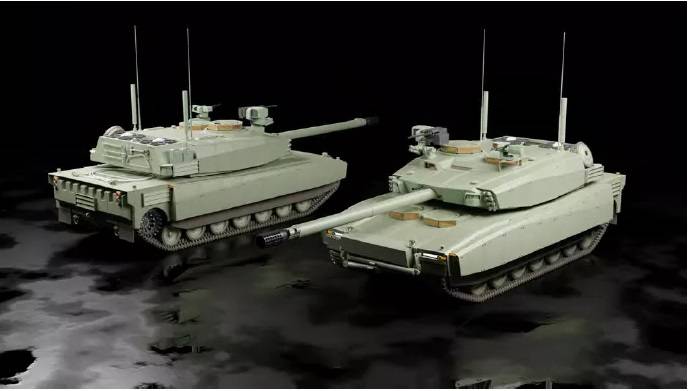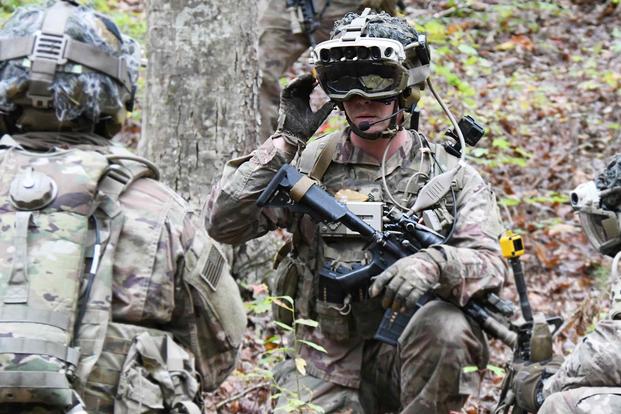I think again though the chances of actually emptying the entire magazine in a single engagement are low. Unless you have a Valley of tears situation where you have a tank troop vs a far stronger adversary but are in a advantageous position to snipe. Yet even in that situation it seems like you have a point to resupply.
You're never going to empty an entire magazine unless because some of the shells you're carrying will necessarily be against soft targets.
You could still use them effectively versus tanks, but they're sub-optimal.
It's not so much about how many shells you can lob at a single type of enemy, as much as it is about flexibility.
A tank with a high volume magazine can have a relatively low number of HE shells, expecting an armored force, but if it stumbles on a light force it will still have sufficient ammo because a small portion of a lot, is a medium portion of not so much.
So, you're not punished as severely for an error, which is good.
The rear mounted power pack has I think more pros than cons.
That's arguable. If you wish to continue this debate beyond my reply, I suggest we move this to the Israeli AFV section.
For Merkava it’s okay, but when you consider how much space modern armor takes up.
The Mark 3 tank was hindered by a large engine, but the Mark 4 has a larger volume of armor on the hull front than the western or global average.
And if at any point it will not be considered sufficient anymore, there's plenty of space on the hull front to spare. Both internally and externally.
Although the forward mounted power pack allows you to bail out the rear It also means in the event that demands this bailout were the result of a penetration to the power pack immobilizing the tank, this again goes back to WW2 tanks where a hit to the prow of the tank where the transmission was was a good way to pin the tank down for a follow up attack.
Which in turn requires actually penetrating the hull front armor.
It was proven in combat that even when the enemy has weaponry overmatch, such a design results in a significant reduction in casualties.
I don’t see anything that exists yet to truly justify a new generation designation just yet even for the vaunted Armata. Abrams TTB was never adopted. At best I view the latest tanks as Gen 3.5.
The Armata is really not part of what the west's trying to field by the 2030's.
The generational leaps between 1st and 2nd gen, then 2nd and 3rd, weren't as big as the technological leap attempted now. Since the introduction of 3rd gen tanks in the late 70's, a lot of things have changed.
The next gen of AFVs promises to multiply the number of sensors, fuse them, and fully automate them.
It promises to multiply the protective value of a tank (via APS).
And of course a wide range of new capabilities like silent operation, decreased visual signature, drone operation, NLOS strike, interconnectivity, etc.
What these new tanks will share with previous gen tanks is that they, like any generational advancement, will require a total restructure of the platform to unlock their full potential.
You can't just mount all these new systems on an Abrams and expect it to work as good as a clean sheet design.
The reason for the crew being sardine canned in the hull like we see on T14 and TTB was to mitigate the event if the turret or hull was hit and penetrated. T14 turret is armored because like the T90, T80, T72, T64 before it.
Yes, but then the crew must sit in the front of the vehicle, which is vulnerable as well. A concept I've proposed a while ago would be to push the turrer ring a bit to the front, and have the crew capsule sit in the rear. This way you can even reduce the profile of the vehicle, because a front capsule will make the hull painfully tall.
The crew will already be fed with information from countless sensors, some extremely high quality but exposed to external damage, and some lower quality but protected by armor.
It would complicate the periscope design, though.
The carousel has a major trade off on safety in the event of an IED or direct penetration. The turret is minimized to try and reduce that risk to the turret yet it’s still a risk. Even a hull hit can still cook off the ammo.
And a bustle rack will be directly exposed to a hit by ATGMs and other shells.
If you penetrate it from the side, that's fine. But if you penetrate the front of the turret and pierce the ammo compartment door as well, you're creating an opening between the ammo compartment and the rest of the vehicle, so some of the energy, heat, and toxic gases from the cook-off will be diverted to the vehicle's internals.
Yes they demand a larger turret and heavier tank absolutely true. However I don’t see that as a major con.
I do. If you look at the T-14 turret from the front, it's extremely small. Every component that upon damage would have the tank disabled or mission-killed, is within an extremely narrow path, roughly as wide as the gun itself, which is by all means a target too small to aim for.
With a bustle rack, you have a turret as wide as the Abrams', but with no armor to protect that ammo unless you're willing to invest an additional 5-10 tons just to protect a different rack design.
AFV design 101 - the turret is always the most vulnerable part of an AFV.
Strive to put all your vitals below the turret ring unless necessary.
The Trophy system, MUAVs, remote weapons stations all need space and room for mounting modern MBT roofs are a hedgehog’s back, tons of sensors and antennas. So More sensors more awareness.
You can artificially inflate the turret with an inert mass to accommodate more sensors.
The majority of the T-14's turret surface area is completely inert. You shoot through the left cheek and you destroy 2 radars and an optic. You shoot the right cheek and you destroy 2 radars and another optic plus RCWS. In both cases you're also bound to disable or destroy some APS hard kill launchers, the roof mounted soft kill APS launchers, and the bustle reserve ammo rack.
First vs which types of penetrators. 100mm, 105mm are going to be slower than 120mm which will differ by generations of short vs Long and 44 vs 48 vs 55 cal. Then you have 130 and 140mm future types which will differ again.
This is critical as in order to deflect IE Tip the rod you have to detonate or impact the rod in flight at a precise moment and set distance. Pull it off right the chances of survival increase miss by a few points it’s all on the armor of the tank. It’s like trying to pull that trick shot of a bullet vs a sword.
You're right that it's a tricky thing to do. But you're not so right about the role of the diameter and speed of the rod.
The tests I've seen show a 120mm APFSDS fired from an L44 gun. The description of the test implied an IMI M338 was used.
Hitting the tank at anywhere between 30° to 45°, I doubt a rod even twice as heavy would be able to avoid such a tilt.
Regarding speed, there is no technical issue in detecting even objects flying at 3,000m/s or more. The physical limitation is half the speed of light, and the rest is a computational limitation that no longer exists for such speeds.
Farther you again point out to only one specific system yet the other more proven system from the same nation differs, can you really apply Iron fist rules to Afganit? Or the Chinese or what ever other systems might be employed? Even vs the KE what they are trying to do is tip the rod to reduce penetration yet it’s still going to hit. It’s just a question of is it defected enough for the armor to survive or not.
The US army pretty openly has
Rafael was also testing anti-KE interceptors, but the only system that was somewhat ready for deployment by the conclusion of the trials was Trophy in its 2009-2019 iteration.
At around the time Trophy entered service, there were many financing issues with AFVs in general in the IDF, and so the program to get an anti-KE interceptor in service was delayed. In 2014 a further delay was announced again, and after that they've announced they plan to introduce it on the Barak MBT first, which will only enter service in March 2023.
The Russian system appears to be similar to the Iron Fist in its interceptor design, except it uses a fragmentation warhead instead of a fragment-free one. This is necessary to counter ATGMs because the interceptors will detonate far from the missile as they cannot pivot.
Tipping the rod even 5° is enough to reduce its penetration to merely a fraction of its potential.
NxRA armor technology appears to proliferate in the west, and we can see a lot of new AFVs looking beefy despite relatively light weight. This will ensure that even traditionally light armored APCs and IFVs will be able to resist the residual penetration of a deflected rod.










